The history of children’s literature has been gaining interest in recent years, as more people understand the vital place these books hold. Besides being invaluable for children’s education and entertainment, they contribute significantly to our understanding of cultural and literary history.
Books2All has compiled a chronological list of six landmark children’s books that includes some lesser-known works alongside enduring classics. We hope that learning (or refreshing your memory) why literature’s renowned critics held these texts in high esteem rekindles your affection for them – and all the books you share – with the children in your lives.
History of children’s literature choice 1: The Governess – Sarah Fielding (1749)
The Governess by Sarah Fielding is widely recognised as the first published children’s novel, and it was written specifically for girls. While the central theme is obedience and serves to teach readers about eighteenth-century accepted conventions of behaviour, there is an intriguing subtext.
Set in a girl’s boarding school – an early use of a device that was to become hugely popular during the twentieth century thanks to Enid Blyton’s Malory Towers and St Clare’s – the story focuses on Mrs Teachum and her nine pupils. Over nine days, each girl gives an account of her misdemeanours and shows a desire to reform.
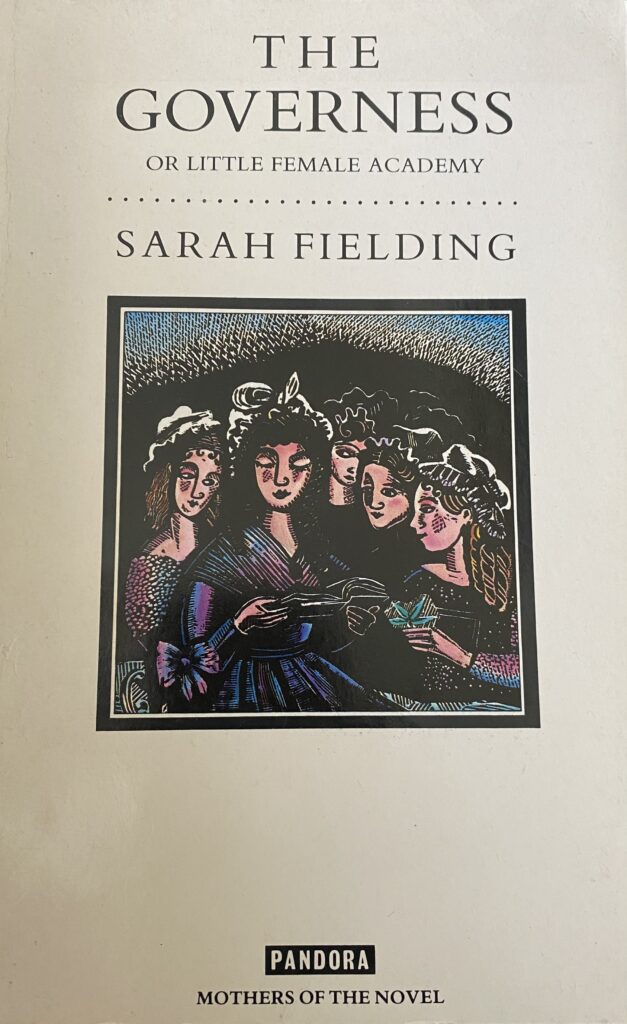
As well as self-reflection, the pupils read fairy tales to guide them on their path of self-improvement. Using fables is a brave move by the author writing at a time when people worried that fanciful thoughts might corrupt young minds. Fielding challenges contemporary views further by making the endings of both the fairy stories and the resolution of the main characters’ lives depart from social norms.
Sister to novelist Henry, Sarah Fielding was one of the most accomplished writers of her generation. Perhaps too moralistic for today’s youthful audience, The Governess was nonetheless as crucial to the development of the novel genre generally as it was to children’s fiction. As such, we think it merits first mention in our list.
History of children’s literature choice 2: At the Back of the North Wind – George MacDonald (1871)
Considered a masterpiece now, George MacDonald’s tale of a boy called Diamond and his adventures with the femininely personified North Wind is something of a ‘Marmite’ tale, provoking strong reactions when it was published (first as a series and then as one book).
The novel blends fantasy and reality to create an account of a child’s travels with one of nature’s strongest forces. And, with more than a tendency to go off on multiple tangents, including poetic and short story interludes, it is not a read for the fainthearted!
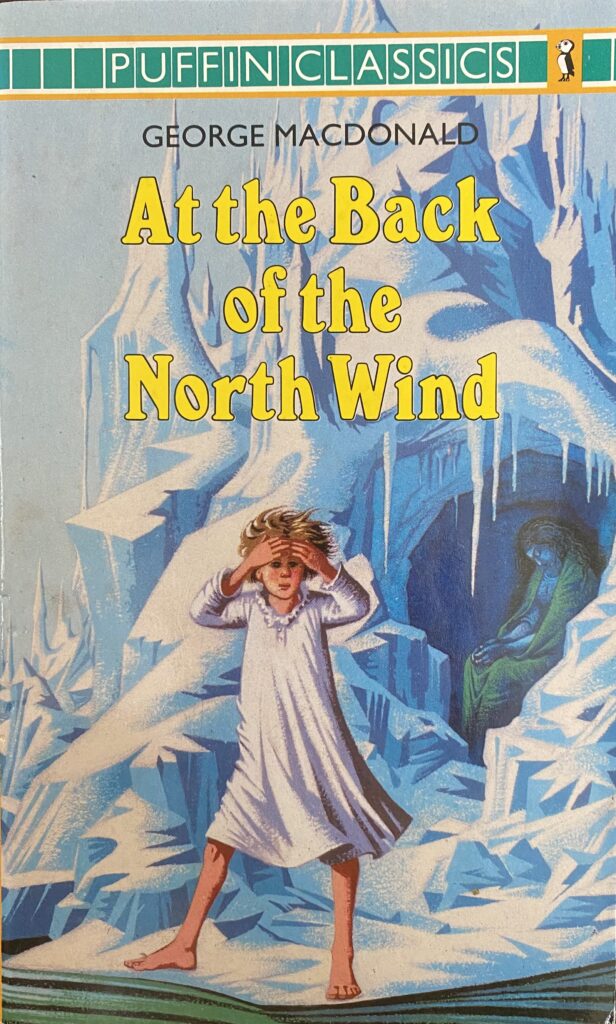
As you might expect from a Victorian tale, there are many references to poverty; in fact, the novel’s premise is how Diamond irritates North Wind by blocking the hole in his bedroom and stopping her flow. Shockingly for the modern reader, but less so when it was written, dearth inevitably leads to death for our brave little hero. Having painted Diamond as a saintly child, who brings joy to all those around him, MacDonald reveals North Wind as his demise.
A complex tale that successfully combines Dickensian London with the unearthly realm, At the Back of the North Wind appeals to more ardent readers. George MacDonald also deserves a place on our shortlist as the man who inspired CS Lewis to create The Chronicles of Narnia and persuaded Lewis Carroll to publish Alice in Wonderland.
History of children’s literature choice 3: Treasure Island – Robert Louis Stevenson (1883)
Serialised originally under the title The Sea Cook, Robert Louis Stevenson’s famous tale of piracy and adventure wasn’t an immediate success. Early editors and readers found the story slow and dry, but the book became a sensation later when published as a single volume and given a new, punchy title.
The classic tale of Jim Hawkins, a young boy who gets entangled with treasure-hunting pirates, mutiny and swordfights, was inspired by a hand-painted map created by Stevenson’s step-son. Stevenson himself wrote that he wanted to create a story that would appeal to children, with “no need of psychology, or fine writing.” But if the story is nothing more than a simple yarn, how can we explain its enduring appeal over 130 years later?
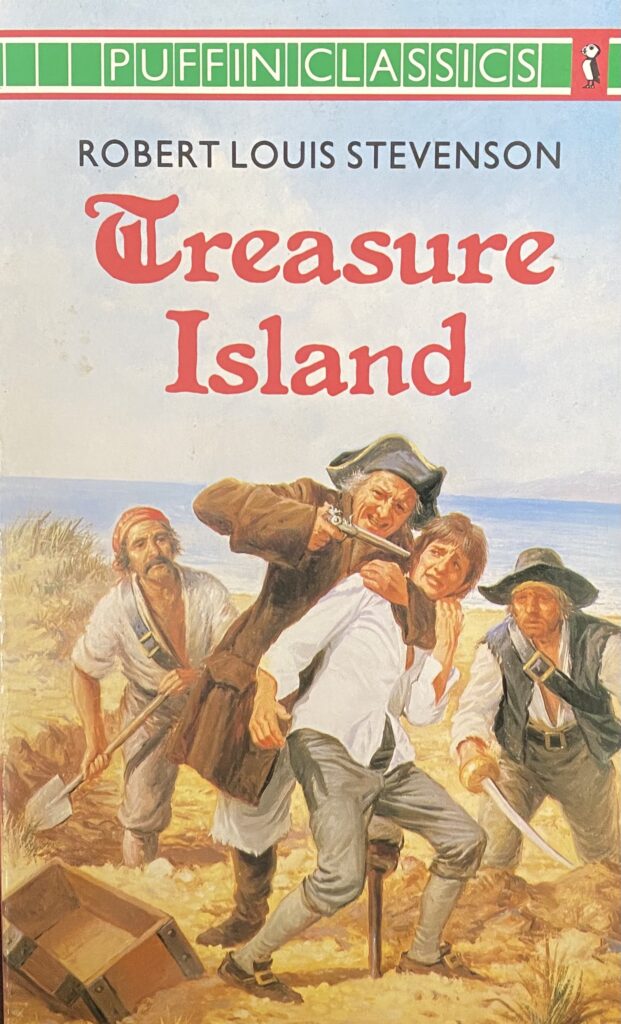
The book’s lasting influence is largely due to Stevenson’s striking imagery – from treasure maps to black spots – that we still associate with piracy today. By combining his own mythology with real historical figures and events, Stevenson turned a simple adventure story into a vivid fantasy.
Treasure Island also appeals as a coming of age story, balancing the fast-paced adventure with Jim’s journey. This gripping tale remains a classic of children’s literature worldwide and is the subject of over 50 film and TV adaptations.
History of children’s literature choice 4: The Wind in the Willows – Kenneth Grahame (1908)
Kenneth Grahame’s book started as a series of stories told to his son and later collected and refined into the famous adventures of Rat, Mole, Badger and the pompous, impulsive Toad.
The book retains a meandering narrative quality, allowing readers to follow a sequence of story threads rather than just one plot. As such, Grahame created a whole world for his characters to inhabit, a setting that children to this day find charming and mysterious.

Some critics have recently returned to the book, questioning whether it’s a parable about class struggle or simply a commentary on (surprisingly) adult themes; Toad’s trip to prison and subsequent escape just one example. But this ambiguity might be a reason why The Wind in the Willows stands out from so much other children’s literature of the time. It refuses to be bound to one genre or style, jumping instead between plots and tones.
One particularly striking moment, usually cut out of adaptations, is from a chapter entitled ‘The Piper at the Gates of Dawn’, where Rat and Mole encounter the god Pan, protector of the forest (and notorious seducer!). The chapter inspired Pink Floyd’s album of the same name – which is just one memorable example of the long and fascinating afterlife Grahame’s book and characters have enjoyed.
History of children’s literature choice 5: Swallows and Amazons – Arthur Ransome (1930)
Timeless in its appeal and the first in a series of 12 stories, Swallows and Amazons is a classic adventure story. Children are shown away from adult intrusion, but this is about as far from Lord of the Flies juvenile anarchy as you can get. United as friends after an initial rivalry over ‘ownership’ of a small island, the Walker children holidaymakers (Swallows) and local Blackett sisters (Amazons) enjoy a Lake District summer of exploration.
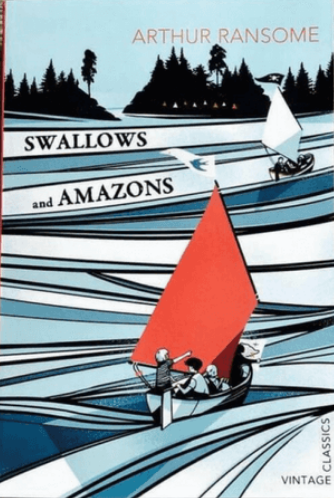
This story is part of a long tradition of seaborne tales dating as far back as Homer’s The Odyssey, through to the nineteenth century’s Moby Dick and Avi’s recent The True Confessions of Charlotte Doyle. But Ransome’s enduring adventure on water has the distinction of being the first to give children a holiday adventure by themselves.
The first recipient of the Carnegie Prize for children’s literature, Arthur Ransome also has the double distinction of making our list and recently having a blue plaque unveiled in his honour.
History of children’s literature choice 6: The Rabbits – John Marsden and Shaun Tan (1998)
The most contemporary entry on this list and the only picture book, The Rabbits, is a modern classic from Australian duo John Marsden and Shaun Tan. An exploration of colonialism and industrialisation, framed around a story of rabbit-like figures arriving in a country populated by marsupials, the story draws a clear parallel to English mariners landing for the first time on the coast of Australia.
This is a tale about initial friendship that turns to suspicion and then into something darker and more dangerous as the native inhabitants begin to understand just how exploitative these new arrivals are. It’s a difficult subject matter that doesn’t attempt to sugar-coat solutions for its young readership or offer a simple message. This determination to tackle complex issues is partly why the book endures – the other reason being Tan’s gorgeous illustrations. By using stylized lines and dreamy colours, he creates a fable world that is transfixing yet frightening.
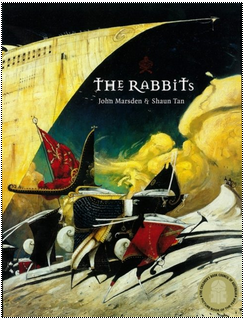
The Rabbits has won enormous praise, receiving the title of Picture Book of the Year from the Children’s Book Council of Australia and subsequently turned into an opera. It continues to be enjoyed by both adults and children precisely because it captures the imagination while refusing to patronise its younger audience.
Thank you for visiting our blog. Our vision here at Books2All is a world where every child finds the books that help them reach their true potential. If you have spare books in good condition at home that you think might be appropriate for school children, please sign up for our app’s pre-release waiting list. If you represent a school, please register to receive books for your students.

